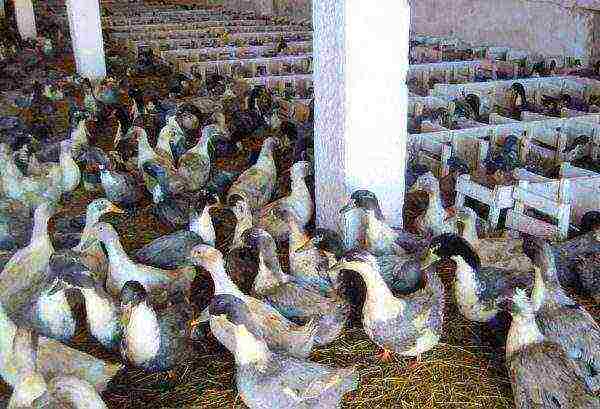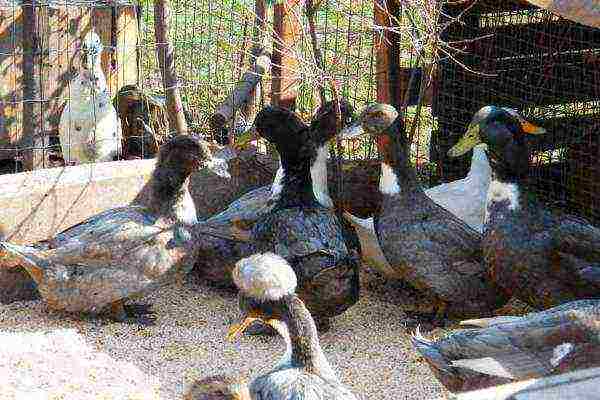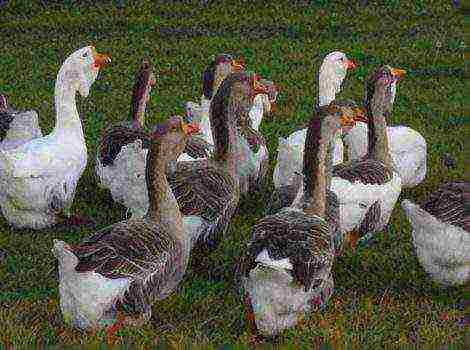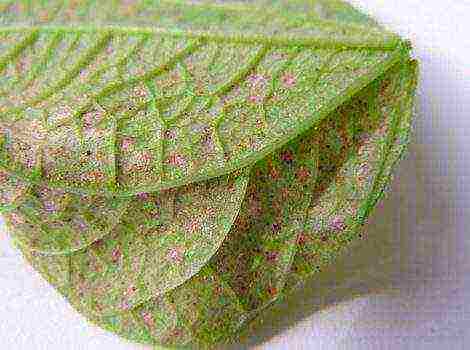Description and subtleties of growing ducks blue favorite
Not so long ago, in 1998, in the Republic of Bashkortostan, and specifically at the poultry factory of the Blagovarsky region, an experimental cross of ducks based on the Peking breed was bred, which was named the favorite.
The result of the selection turned out to be unexpectedly successful, as the breeding of ducks the favorite became accidental, but the intermediate result exceeded all expectations. Ducks have become popular in both large poultry farms and small farms. In this article we will consider the description and characteristics of the favorite ducks, talk about raising ducklings at home, find out what to feed and how to care for.
Description of the breed favorite
The ducks of this cross are popularly called Pharaoh. Another name is blue duck. Actually, the blue duck is one of the varieties of the favorite cross, but this name is firmly entrenched in the representatives of this species. The thing is most of the favorites have a rather unusual noble color from blue to deep blue with an ash tint, but ducks with white and even brown plumage can be found.
The same can be said about the color of the beak and massive webbed feet, the shade of which will be close to the color of the feathers. The beak, like the head, is large. The body is elongated, the neck is small, the keel protrudes slightly, powerful, not long wings, fit snugly to the body.
Keeping blue ducks at home
The favorite ducks are not afraid of high and low temperatures, they successfully acclimatize in various regions. There are no fundamental requirements for a poultry house in which blue ducks will be kept. It is desirable that the birds have access to a natural reservoir. In this case, there will be no need to feed additional baits with minerals and microelements, since the bird can find all the necessary additional feed on its own.

In the absence of a reservoir, ducks are kept in a regular poultry house, which does not need to be insulated due to the good tolerance of the cold, the favorite. Due to the fact that these ducks are easy to breed, given their adaptive qualities, strong immunity and omnivorousness, the cross is grown both on private farms and in large industrial poultry farms.
Cross characteristics
With good fattening, as early as 2 months, the weight of these waterfowl birds reaches about 3 kg. The chicks reach the weight of an adult at the age of 5 months. The average weight of drakes is about 5 kg, but it can reach up to 7-8 kg with good fattening.
Females weigh less. The average weight of an adult female is about 4 kg, the maximum can reach up to 5-6 kg. The main advantage of the favorite is that, despite the impressive size, these ducks have very little fat, unlike representatives of the same Peking breed.
Although duck meat cannot be called dietary in terms of calorie content, the fact of the presence of a minimal amount of adipose tissue actively attracts the attention of consumers. The meat itself is considered very tasty, devoid of any specific smell.
In addition, excellent breeding breeds are:
- Mulard
- Muscovy ducks
- Peking ducks
- Bashkir ducks
Egg production of the breed
It is customary to divide ducks in four main directions.
- Meat.
- Egg.
- Egg and meat.
- Decorative.
Pharaoh is a meat cross, but it also has good egg production rates, for which some breeders tend to attribute this variety to the egg-meat direction. The number of eggs per year can be from 100 to 150, which is an excellent indicator for the meat type. The eggs are large, weighing about 80-85g, and have improved taste compared to chicken eggs.

Breeding and raising blue ducklings
For all its advantages, the blue favorite has a significant disadvantage as well. This cross is almost impossible to breed naturally, using a female, since these ducks actually completely lack the institution of incubation, although individual females successfully cope with this role, but the favorite still should not rely on maternal feelings.
Individual farmers simply lay suitable eggs on another hen ready to hatch chicks, such as a goose or turkey. But if there was no suitable brood hen either among the favorite or among other birds in the courtyard, the eggs are simply laid in the incubator. Another breeding method is buying ready-made day old ducklings from large poultry factories. Due to the high survival rate of ducklings, this method is very popular.
Unlike adults, babies still love warmth, therefore, having settled a duck brood, optimal temperature conditions should be created in the poultry house. The first 7 days of life, the room with the favorite ducklings should be heated from 27 to 32 degrees. Heating is no longer required from day 8, provided that the room temperature is above 18 degrees Celsius. You can understand how correctly the temperature is chosen by the behavior of the ducklings.
When they are hot, chicks breathe heavily with an open beak, often pouring water over them. If the juveniles are cold, the chicks, as a rule, squeak, trying to climb on top of each other, grouping in heaps in the warmest places of the perimeter. Under the condition of a suitable temperature, ducklings are mobile, move freely and rest in various zones of the allocated room.
For feeding ducklings, you can use either ready-made starter combined feed, or use your own food. For the first time, newly hatched birds are fed a boiled finely chopped egg or cottage cheese.
Gradually add carrots, boiled potatoes, clover and chopped nettles to the feed. For adolescents and adults, wet mash is made from a mixture of cereals, vegetables and root crops, greens. As special additives, the birds are given bone meal, ground shells, and chalk. If there is a reservoir, there is no need for any additives. In the conditions of poultry factories and large farms, blue ducks are fed with compound feed.

Birds consume a lot of feed for the first 2 months, gaining weight intensively. After this period, feed costs are reduced, weight gain is slower.
Diseases inherent in the breed
In birds, just like in humans, the maturation of the immune system occurs with age, so young duck are more susceptible to morbidity than adults. Cross favorite is distinguished by low susceptibility to various kinds of diseases, however, these ducklings can also get sick, especially in the first day of life.
It is important to avoid overcrowding. Provided that the chicks will be indoors only for the first time with subsequent transfer, the density of heads should not exceed 16 heads per square meter. If the ducklings are to live in the same room from the very first day to slaughter, the stocking density should be halved.
One of the keys to successfully raising healthy ducklings is having clean water. Ducks, being waterfowl, are eagerly ready to swim in any container, so drinkers should be installed so that chicks cannot get there with the intention of taking a bath. An excellent solution would be an inverted jar in a saucer. From about two weeks of age, you can put a special shallow bathing container for the ducklings.
Diseases of ducks can be divided into infectious and non-infectious. The following diseases are classified as non-infectious.
- Avitaminosis. The most common deficiency of vitamins A, E and D. With a deficiency of vitamin A, there is a loss of appetite, conjunctivitis, discharge of fluid from the nasal passages, but similar symptoms can be inherent in a number of other infectious diseases. When the diagnosis of vitamin A deficiency is confirmed, diseased individuals are fed with fish oil or synthetic vitamin supplements; as a preventive measure, feed for young animals is enriched with fresh or dried herbs. With vitamin E deficiency, birds have convulsions, lethargy, weak pulse against the background of a complete lack of appetite. With a lack of vitamin D, rickets may develop.
- Urovsky disease. Like vitamin deficiency, it can occur due to the scarcity of the diet for all kinds of trace elements and minerals. With a shortage of them, chicks pluck out down and feathers for themselves, eat sawdust, earth and sand. For treatment and prevention, bone meal, iodized salt, crushed chalk and shells are used.
- Cuticulite. Disease of ducklings in the first month of life. Against the background of apathy and lack of interest in food, chicks have dark-colored diarrhea with undigested pieces of food. For treatment, watering of ducklings with a light pink solution of ordinary potassium permanganate is used.
- Omphalitis. Inflammation of the umbilical ring of a non-infectious nature. Weak disinfectant solutions are used as a treatment.
Infectious diseases.
- Coccidiosis. Ducks under one and a half months are most often affected. Sick individuals lose their appetite, becoming slow, apathetic. The stool is usually thin, brown in color, interspersed with blood and mucus. Sick individuals should be destroyed by isolating them from the general flock.
- Tuberculosis. Koch's wand does not spare anyone, including ducks. The most common cause of tuberculosis is excessive crowding, dirt and stuffiness in the room in the absence of a normal ventilation system. When tuberculosis is confirmed, the diseased ducks are slaughtered, and antiseptic treatment is carried out in the poultry house.
- Hymenolepiasis. The defeat of the intestinal tract by helminths. To be treated with anthelmintics. Symptoms of the disease are stool disorders from constipation to diarrhea, convulsions, paralysis, damage to the nervous system.
- Salmonellosis. The acute form of intestinal infection caused by pathogenic microorganisms of the genus Salmonella is equally dangerous for both birds and humans. Treatment requires isolation of diseased individuals for the purpose of drinking with antibacterial drugs, for example, tetracycline.
In addition to these diseases, ducklings can become infected with typhoid or cholera. In case of typhoid or cholera disease, treatment is not carried out - the sick bird is destroyed, the carcasses are burned, healthy individuals are quarantined for the entire incubation period.

Advantages and disadvantages
The favorite or pharaoh has a number of advantages that make this cross popular both for industrial breeding and for small farms:
- quick weight gain;
- high degree egg production for cross-country meat orientation;
- unpretentiousness in food;
- adaptability to various temperature regimes and conditions of detention;
- tasty meat practically devoid of fat;
- beautiful, pleasing to the eye, plumage.
The disadvantages can be attributed only to the negligence of ducks of this species as hens, which allows breeding a bird only with the help of an incubator, hens of other breeds, or by buying hatched ducklings.
Reviews
Lisa: This breed of ducks was bred in Bashkortostan. Therefore, we have it quite widespread and in high demand. The survival rate of these ducks is 100%, although I am not an experienced poultry breeder. Immediately after the purchase, I solder them with ampicillin - 10 tablets per 3-liter can of water (you never know what kind of infection they could pick up at the poultry farm), after a week I repeat the course. I have been keeping them for the third year. When I came to the market in confusion about whom to buy (I had never kept any living creatures before them), the sellers advised this breed because of its vitality and unpretentiousness. They are very picky about food. I steam a mash of 50% grain and 50% bran or forage. I make sure that the feeder is always full (I feed them without measure) and clean water in the drinker. In addition to the main food, they feed on grass like geese. At 2 months, the net weight is 3-4 kg. It makes no sense to keep it longer than 2 months - they will not get bigger. The meat is tasty and not fatty. By their nature, they are very calm and not loud (unlike the neighboring Peking ones, they make noise all day) they raise the noise only when they are hungry, or who will frighten away. So, who else is thinking of buying them or not - take it, you will definitely not regret it.
Irina: Keeping ducklings of the favorite breed is very beneficial if there is a reservoir nearby. They are capable of getting their own food. But first, they need to be fed hard-boiled eggs. Provide balanced, fortified food for better growth and weight gain. A very good breed of ducklings for breeding.
Veronica: I am very pleased with this breed. I have been breeding them for more than 3 years, while for all three years the productivity of ducks has reached up to 170 eggs per year. Highly recommend! Forum of poultry farmers.
Although ducks of this cross are successfully bred in large poultry farms, this particular bird is ideal for a small backyard or farm in view of the fact that it does not require special investments associated with the arrangement of the place for the deployment of ducks and feeding the livestock.
The birds are not noisy, trusting, if not friendly, they easily settle in a new place, do not require much care, despite the fact that the result of the efforts spent will be meat with excellent taste and a large (for meat cross) number of excellent homemade testicles.


